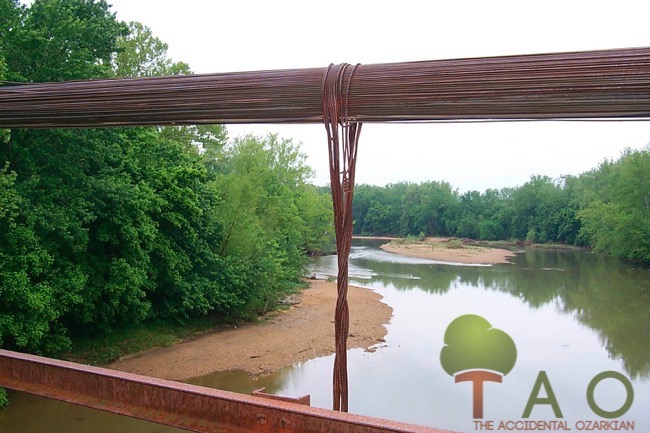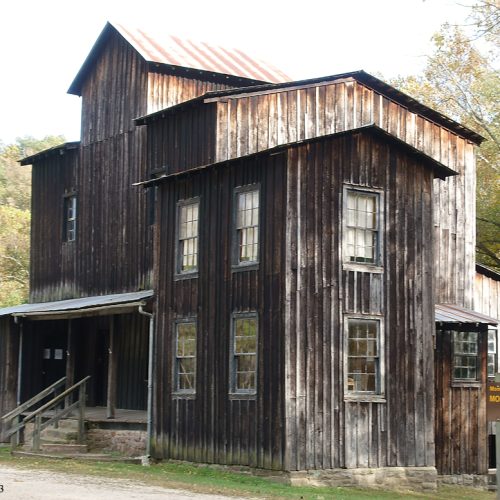“This would not be good place to take a little kid,” said my son as he gingerly stepped over huge holes in weathered boards on an old swinging suspension bridge. The bridge spans Auglaize Creek in Miller County, so it’s called the Auglaize Bridge. This was the first of Missouri’s swinging bridges we visited.
The 400-foot long span of the bridge creaked, groaned, and swayed a little as we walked to the other side. Built in the 1920s or ‘30s, this bridge (and several others in our state) is still in use. It even boasts a weight allowance of 15 tons! I left my Suburban parked in the nearby woods, since the bridge looked treacherous to traverse. A swim in Auglaize Creek was not on my agenda for the day.
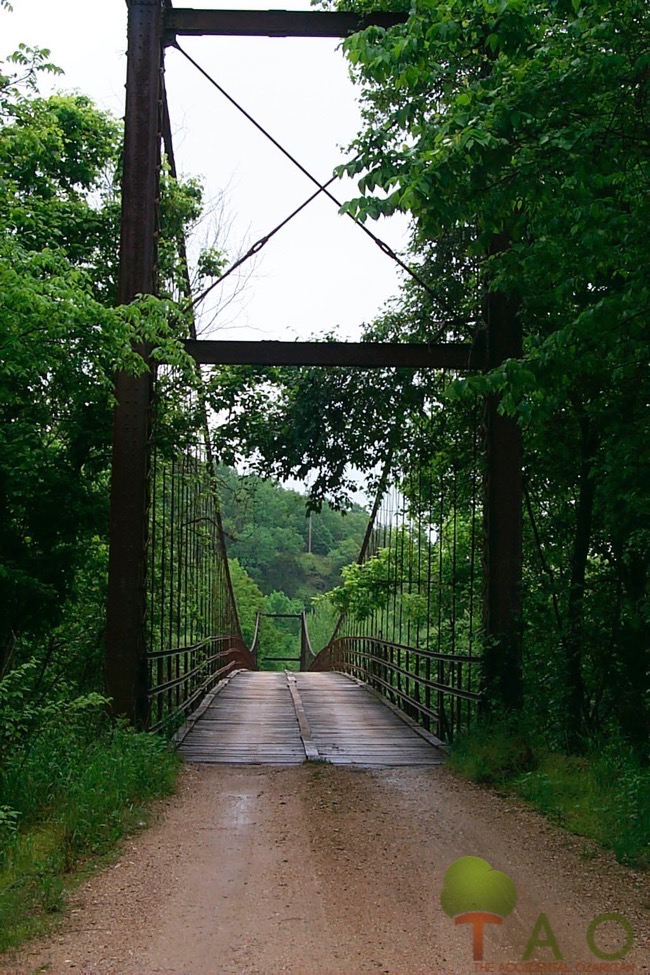
When we walked back to the middle of the bridge an old multi-colored Ford Escort, complete with toothless driver, appeared at the east end. He pushed down on the accelerator, picking up more speed as he came toward us. We pressed our backs against the rusty steel sides of the bridge as the car passed. He was in full throttle and minus an exhaust manifold, in harmony with the swaying of the bridge, as he drove—plunkety, plunkety, plunkety. He grinned and made some smart-aleck comment about, “Why this ole bridge can still hold the weight!” Then, he turned his car around and drove back across the bridge.
My husband speculated that maybe this guy lived to torment visitors to the bridge. He did seem to appear out of nowhere, and he also seemed to delight in making the old bridge sway.
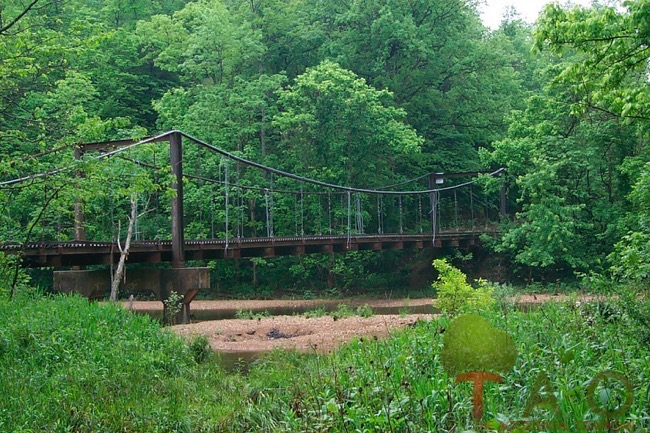
We did drive over one swinging bridge though, in order to reach this site (overriding my teenage daughter’s protestations). This one spanned Miller Creek, but only for about 100 feet. It has been renovated, meaning new cables lie stretched near the old cables, and corrugated steel has replaced wooden crossing boards.
As I’ve often written, history can be seen and felt in the old bridges across the state. If you want to take your family to a place where you can discuss the past, plus mathematics and physics, take them to an old bridge somewhere.
Supposedly, these old swinging bridges were quite common in Missouri. Miller County had eight of them.
One of the area’s more well-known bridge builders of that era, who built the two bridges we visited, was named Joseph Dice, of Warsaw, Mo.
According to Peggy Smith Hake, Dice became an apprentice to a master bridge builder, Dr. D.M. Eddy. Eddy built the Stockton Bridge in 1895. Forty bridges later, Dice retired.
His bridges always measured 14-feet wide. He never drew plans, preferring to use a ball of twine to figure curvatures and spans. Men on horseback and in boats pulled the wires across the creeks, and men with mules hauled cement, river gravel, and timbers to the sites.
Hake writes, “We are told that Mr. Dice could tell by the ‘feel’ of the wire if the tension was right. As many as 950 strands of wires was [sic] required to carry the weight of the cables.” Supposedly, when the highway department started requiring blueprints, Dice quit building bridges.
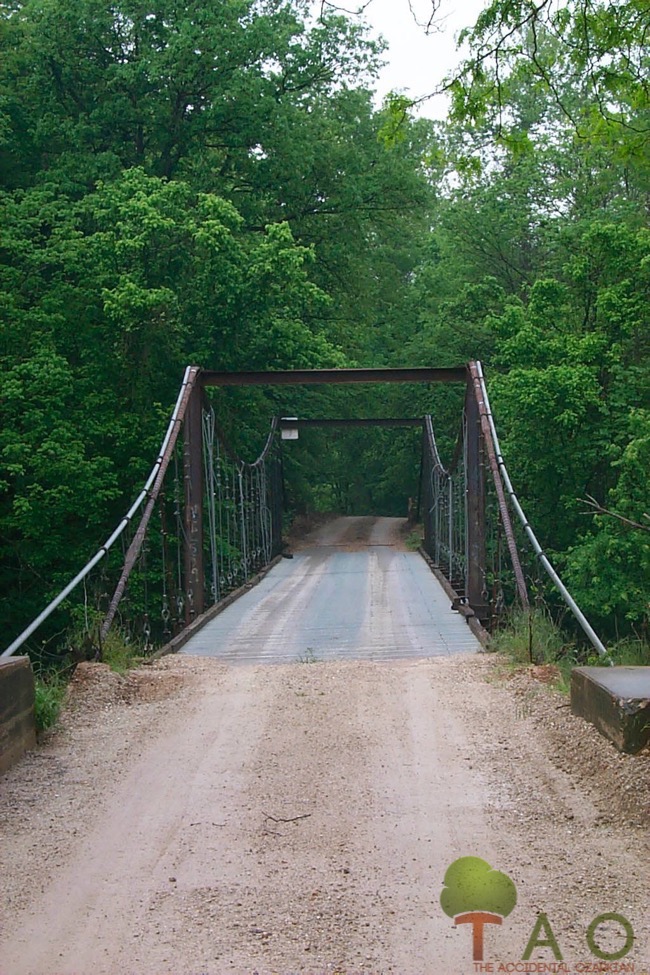
According to a website touting the benefits of living in Warsaw, Mo., there are only 12 swinging bridges left in Missouri. The bridge in Warsaw crosses the Osage River, and the Warsaw Downtown Riverfront Organization Inc. is presently applying for this bridge to be placed on the National Historical Register.
Where to find the Swinging Bridges
The bridges of Miller County can be seen on Swinging Bridges Road, off Highway 42. The sign for the road is on the left side of Highway 42, as you leave Brumley heading toward the Lake of the Ozarks.
This Ozarkian first appeared in 2002, St. Louis Post Dispatch.

